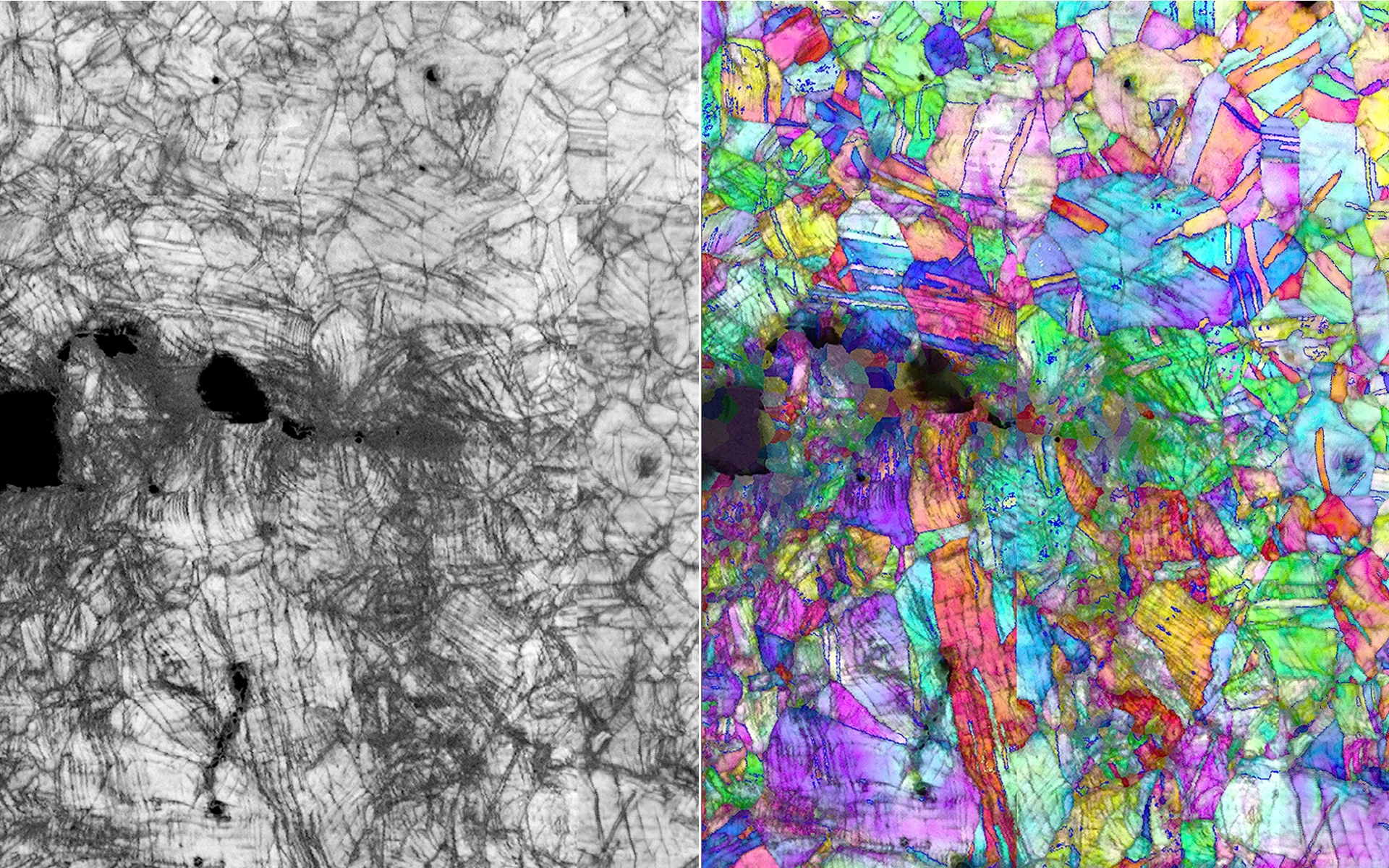A simple alloy has claimed the crown for toughest material ever recorded. In a new study, a team led by researchers at Berkeley Lab ran the alloy through a series of tests and discovered not only its incredible toughness, but high strength and ductility that actually improve in colder temperatures, unlike most known materials.
The alloy in question contains chromium, cobalt and nickel (CrCoNi), and it belongs to a class of metals called high entropy alloys (HEAs). Most alloys are made up of one dominant element with smaller amounts of others added in, but HEAs contain equal amounts of each element. This can give them some impressive properties, such as high strength-to-weight ratios, an elastic modulus that rises with the temperature, or ultra strength and ductility.
In previous work, the researchers found that CrCoNi showed high strength and toughness at low temperatures of around -196 °C (-321 °F). For the new study, the team investigated how it would hold up at even colder temperatures of -253 °C (-424 °F), at which helium exists as a liquid. And sure enough, its toughness hit new heights in preventing cracks propagating.
“The toughness of this material near liquid helium temperatures is as high as 500 megapascals square root meters,” said Robert Ritchie, co-lead researcher on the study. “In the same units, the toughness of a piece of silicon is one, the aluminum airframe in passenger airplanes is about 35, and the toughness of some of the best steels is around 100. So, 500, it’s a staggering number.”

Normally, materials become more brittle in colder temperatures, so the team investigated how CrCoNi was able to hold up so well. They used several types of microscopy to probe the crystal lattice structure of the alloy under force.
It turns out, CrCoNi gets its cool toughness through a series of atomic interactions that occur in a specific sequence. Imperfections in the crystals are displaced by the applied force until they create obstacles that work to increase resistance against that force. The last step of the process switches the crystal structure from cubic to hexagonal.
The team says that the material’s toughness in the face of incredibly cold temperatures could make it useful for objects that operate in extreme environments like deep space.
The research was published in the journal Science.




